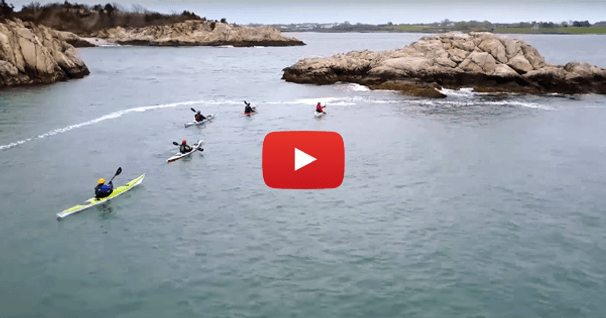Navigation Rules for Paddlers
-

Photo by Mark Baskeyfield
Photo by Mark Baskeyfield
Paddlers and the Navigation Rules
How many of you have ever heard that paddle craft (vessels under oars according to the Navigation Rules) always have the right of way? I have heard that a number of times and have read it in many places. There is NO basis for that in the Navigation Rules. It isn’t written explicitly, and it is not implied anywhere. It is a myth and a potentially dangerous one at that.
Vessels under oars are singled out but once in the Navigation Rules and that is in the lighting section. Otherwise we are simply “vessels” with all the attendant responsibilities. There are essentially three different navigational situations boaters find themselves in. Overtaking situations, head on (meeting) situations and crossing situations. Let’s examine the rules and see how they apply to us paddlers in each of those situations.
Overtaking (passing) situations are easy. The vessel being overtaken is the most privileged vessel on the water. It is always the “stand-on” vessel and the vessel doing the overtaking is always the “give-way” vessel. Paddlers are the stand-on vessel when being overtaken. I don’t think we find ourselves doing the overtaking often. When being overtaken, we have a responsibility to maintain course and speed. Before altering course, always look behind. If anyone is overtaking us, we have a duty to maintain course and speed.
What about meeting and crossing scenarios? Vessels under oars are not specifically mentioned in the meeting and crossing rules (14 and 15) or in rule 18 where the hierarchy is established. There are rules for all the other categories of vessels but us paddlers. We are covered in Rule 2 which very generally says to use good judgement based on the whole of the situation. With that in mind there is no reason why in meeting situations a port to port passing won’t work well and in crossing situations that the vessel which is to the right of the other shouldn’t be the stand on vessel.
If you are paddling and a power boat is approaching you head on, make an early and apparent course change (that’s Rule 8a and b) to starboard. That sends a clear message to the approaching vessel that you want a port to port passing.
Here are a couple more pointers with a basis in the Rules. When paddling in a channel, stay as far right as practicable (9a). I avoid channels when I can. That’s the beauty of our paddle craft. We can go just about anywhere. The vessels in the channel probably have to stay in the channel, so that would mean us paddlers would have to give way to them if we were crossing (9d.) Avoid anchoring in a channel (9g.) When crossing channels do so at right angles. Lastly, all mariners are burdened with the responsibility of taking all action necessary to prevent collision even if it means departure from the rules (2b.)
That’s a quick and easy rundown of the rules as they apply to our interactions with motorboats. It is vital that we don’t erroneously assume that the rules imbue us with any special privileged status as vessels under oars.
For more, read the Full Navigation Rules from the USCG.
Related Articles
"Rising Waters documents an attempt to be the first group to run all the rapids of the lower Terra Nova…
Here's a list of ten tips that I found useful when paddling with different groups. Paddling group…
I once asked some whitewater experts if they thought 15-16 year old's who had never paddled a canoe…
One of the great things about kayaking is that on a very simple level, you can just slip on a life…




